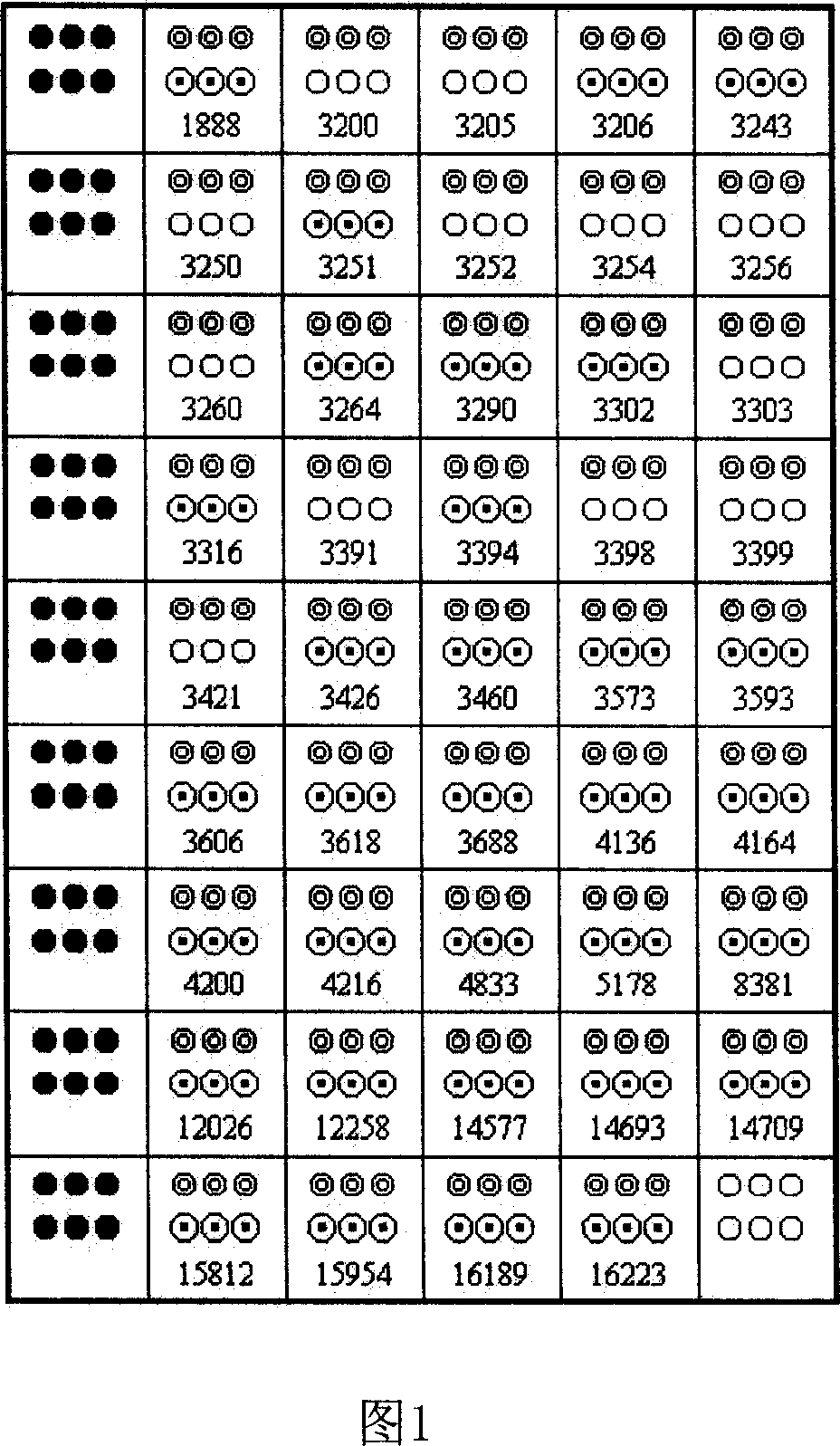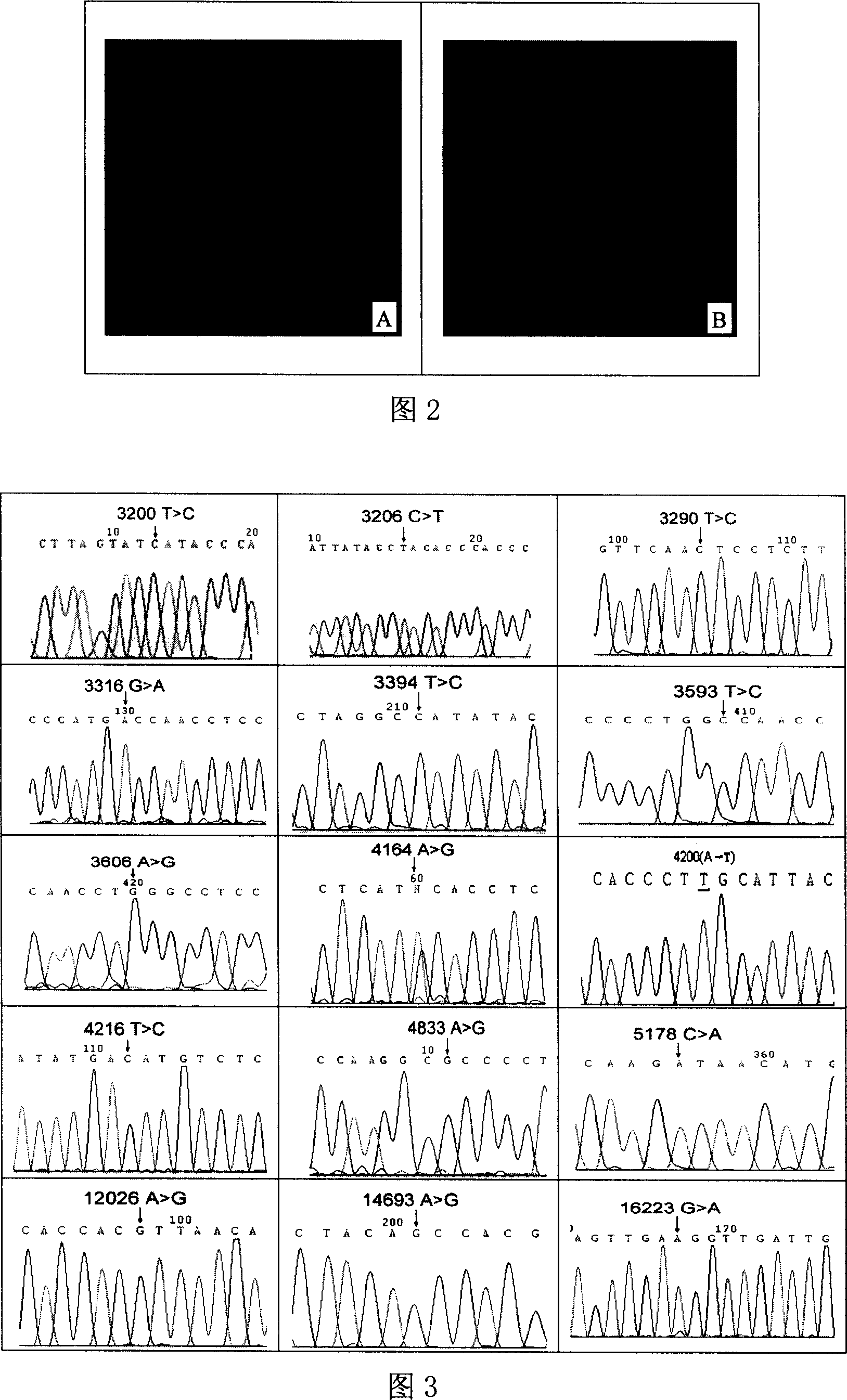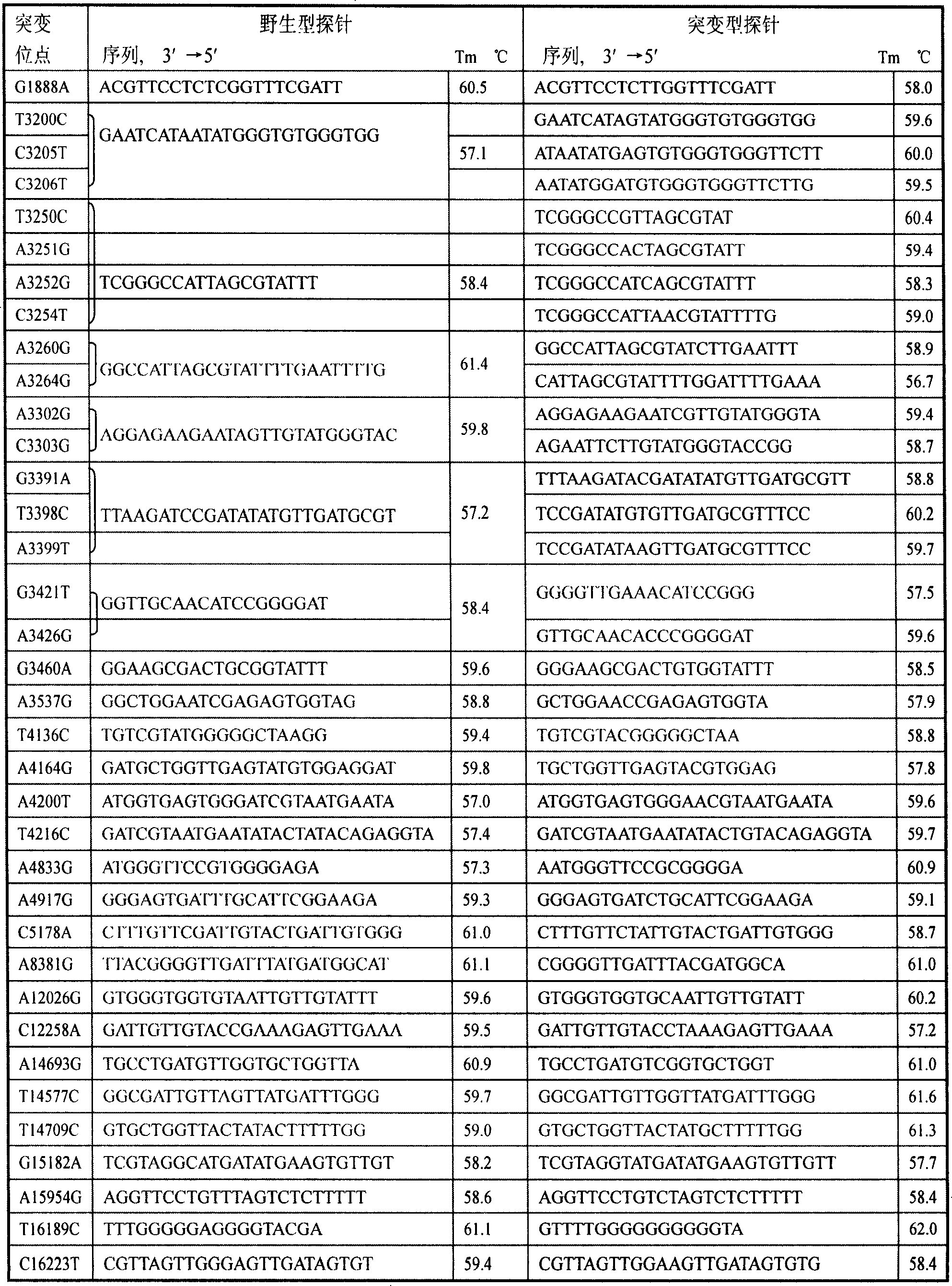Micro-array chip with forty-five gene locus for detecting mitochondria diabetes
A microarray chip, mitochondrial gene technology, which is used in the determination/inspection of microorganisms, DNA/RNA fragments, biochemical equipment and methods, etc. The process takes a long time to achieve the effect of saving experimental time
- Summary
- Abstract
- Description
- Claims
- Application Information
AI Technical Summary
Problems solved by technology
Method used
Image
Examples
Embodiment 1
[0053] Sample Handling and Labeling
[0054] (1) Fresh whole blood samples
[0055] The modified NaI method (Yu Hong, Peng Fangfang. Experimental Techniques of Medical Biochemistry and Molecular Biology, 1st edition, Wuhan University Press, 2003) was used to extract DNA templates.
[0056] (2) blood stain specimen
[0057] Take 1.5×1.5cm 2 For large or small blood stains, soak in 1ml of double-distilled water, shake and mix well, centrifuge at 12,000rpm for 3min, remove the supernatant, wash once with double-distilled water, then add 200μl of 5% Chelex-100, incubate at 56°C for 20-30min, Boil for 8 minutes, centrifuge at 10,000 rpm for 3 minutes, and take the supernatant for PCR amplification.
[0058] (3) hairball specimen
[0059] Cut off 3 to 4 hairs at a distance of 3 to 4 mm from the root, soak the hair ball in Chelex-100 solution, and keep it warm at 56°C for 6 to 10 hours. Oscillate for 5-10s. After boiling at 100°C for 10 minutes, centrifuge at 10,000 r / min for 3...
Embodiment 2
[0062] chip fabrication method
[0063] Dilute 90 amino-modified wild-type and mutant probes at 45 sites with 1×TE-Buffer (1mM Tris-HCl, 1mM EDTA, pH8.0) to a final concentration of 5 μM; The spotting matrix shown was arranged in a 384-well plate (Costar), and was spotted on the surface of an aldehyde-modified glass slide by a chip spotter (Nanoliter Dispensing system, Packard Instrument Company), and kept above a closed saturated saline solution. Relative humidity, fixed at room temperature (25°C-30°C) for 48-72 hours, stored in a 4°C refrigerator for later use.
Embodiment 3
[0065] Hybridization reactions and signal detection
[0066] Preheat the hybridization solution (Roche) at 42°C, fill it into the chip reaction chamber, and pre-hybridize for 30 minutes to block the non-specific binding of the substrate; take 45 μl of the denatured labeled PCR product mixture and mix it with the preheated hybridization solution at a ratio of 1:10, avoiding The reaction chamber was filled with light, and hybridized at 42°C for 3 hours.
[0067] Wash at room temperature (25°C-30°C) with 2×SSC-0.1% SDS for 5min×2 times (20×SSC-Buffer: 8.766g sodium chloride, 4.412g sodium citrate, distilled water to 50ml, hydrogenated Adjust the pH to 7.5 with sodium; 0.1% SDS: 1 gram of SDS (sodium dodecylsulfonate) was dissolved in 100ml of double distilled water), washed with 0.5×SSC-0.1%SDS at 42°C for 15min×2 times, double-distilled at room temperature Wash with distilled water for 10 minutes, and spin dry by centrifugation. The AxonGenepix 4000B chip scanner collected chi...
PUM
 Login to View More
Login to View More Abstract
Description
Claims
Application Information
 Login to View More
Login to View More - R&D
- Intellectual Property
- Life Sciences
- Materials
- Tech Scout
- Unparalleled Data Quality
- Higher Quality Content
- 60% Fewer Hallucinations
Browse by: Latest US Patents, China's latest patents, Technical Efficacy Thesaurus, Application Domain, Technology Topic, Popular Technical Reports.
© 2025 PatSnap. All rights reserved.Legal|Privacy policy|Modern Slavery Act Transparency Statement|Sitemap|About US| Contact US: help@patsnap.com



